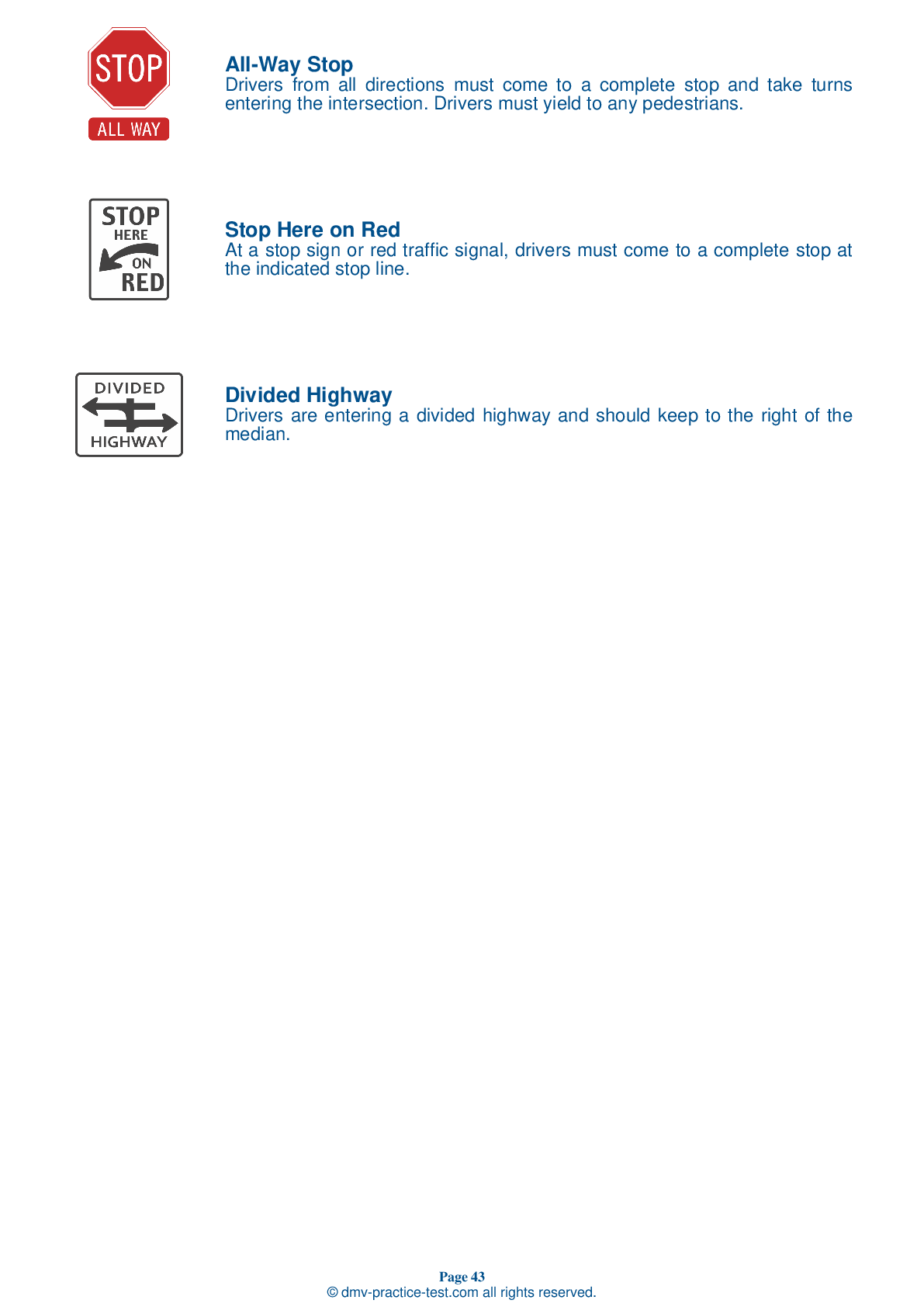FREE Connecticut DMV Practice Test #24 Page 3 of 3
This set of Connecticut DMV practise tests was just updated for January 2025. It includes questions based on the Connecticut Driver Handbook's most essential traffic signs and regulations for 2025. Use actual questions that are very similar (often identical!) to the DMV driving permit test and driver's licence exam to study for the DMV driving permit test and driver's licence exam.
Each practise test question has a hint and explanation to assist you in remembering the concepts. The written component of the official DMV test will include questions about road rules, traffic signs, and driving statutes, as well as information from the Driver Handbook.
To achieve the required passing grade, you must correctly answer 20 of the 25 questions. Take our DMV practise exam to help you prepare for your Connecticut instruction permit or driver's licence.
The DMV exam is available in several languages.
Using any form of testing help will result in an automatic fail, and the DMV may take further action against your driver's licence, so avoid it.
17 . If your vehicle has a two-part safety belt system, you should:
If your vehicle has a two-part seat belt system, be sure to wear both the lap belt and the shoulder belt. Wearing either part alone greatly reduces your protection. If you have an automatic shoulder belt, be sure to buckle your lap belt as well.
18 . If a traffic signal light is green and a police officer signals for you to stop, you should:
Drivers must obey any instructions given by a police officer, even if the instructions contradict laws, signs, signals, or markings that would otherwise apply.
19 . When passing on the left of a vehicle, it is safe to move back into the right lane:
When passing another vehicle on its left, you may move back into the right lane when the headlights of the passed vehicle can be seen in your rearview mirror. Always signal before changing lanes.
20 . At intersections, crosswalks, and railroad crossings, you should always:
Any time you come to a place where people may cross or enter your path, or where one line of traffic meets another, you should look to the left and right sides of your vehicle to make sure no one is coming.
22 . As of August 1, 2008, what is the nighttime curfew for 16- and 17-year-old drivers?
Unless the teen is traveling for employment, school, religious activities, or medical necessity, or if the individual is an assigned driver in the Safe Ride Program, 16- and 17-year-old drivers are not permitted to drive between the hours of 11 p.m. and 5 a.m.
23 . This road sign means:





